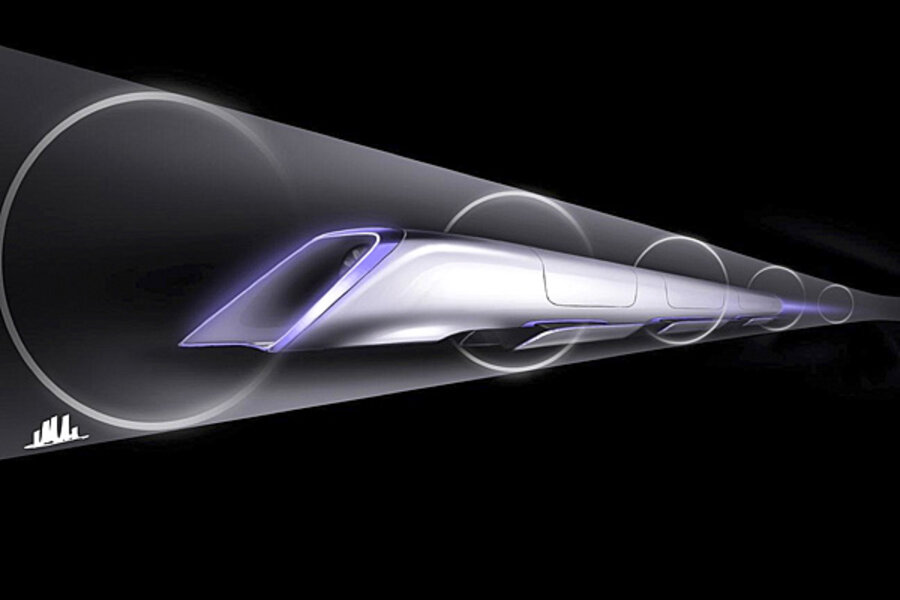Elon Musk's Hyperloop takes root in California
Loading...
Quay Valley, Calif., is already an experiment. Located halfway between San Francisco and Los Angeles, the town is being built to run entirely on solar panels and to represent a more eco-friendly “new ruralism.” Now it’s set to try something else new – the first prototype of Elon Musk’s Hyperloop.
Hyperloop Transportation Technologies announced it will have a Hyperloop track up and running in Quay Valley as early as 2016. This is the most concrete step forward for Elon Musk’s transportation design, which uses tubes, pods, air blades, and electromagnetic force to transport people at up to 800 miles per hour.
Though there is still a question of funding and use for the test track once it is constructed, this marks a growing interest in transportation solutions.
Elon Musk first introduced his idea for the Hyperloop in August 2013. His design called for aluminum pods that could hold people or cars that would be fired through tubes pulled by electromagnetic force. Low pressure compartments and compressor fans would lessen friction, allowing pods to travel at up to 800 m.p.h. – meaning you could travel from Los Angeles to San Francisco in 30 minutes.
His initial plan called for a track along California’s I-5, and he claimed it could be completed in four or five years given the right team. However, with his focus on Tesla and SpaceX, he offered the blueprints online for anyone to use, and said he would build a test track in Texas sometime soon. No further details have emerged on that track.
Now, Hyperloop Transportation Technologies is looking to make that a reality in California. Its version of Hyperloop will be built on five miles of land, will initially be used to configure passenger pods, and won’t go faster than 200 m.p.h. Eventually the researchers hope it can be used as public transportation in Quay Valley.
"This installation will allow us to demonstrate all systems on a full scale and immediately begin generating revenues for our shareholders through actual operations," says Dirk Ahlborn, chief executive officer of Hyperloop Transportation Technologies to the Verge.
It should be noted that Hyperloop Transporation Technologies is not associated with Elon Musk in any official capacity. Rather, the company came to existence through crowdfunding on JumpStartFund, and is now looking to a stock offering to fund the Quay Valley project. The company is hoping to raise at least $100 million, with the promise of potential dividends years down the road. With that being said, the company is serious about creating a feasible, commercially viable model of Hyperloop.
“It’s not a test track,” Mr. Ahlborn adds to Wired.








